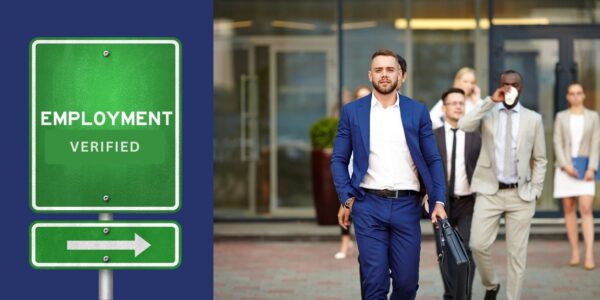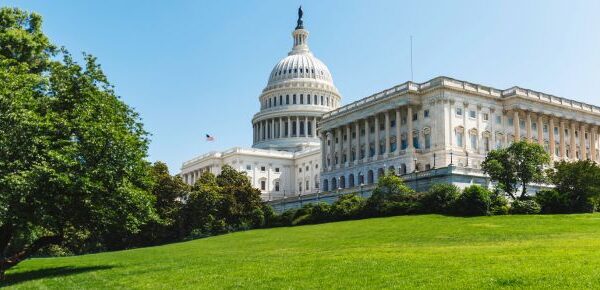USA Nonimmigrant Visas – Temporary Visas Information

In the United States, nonimmigrant visas are also known as temporary visas. These are granted to foreign nationals who wish to enter the United States temporarily for a specific purpose, such as Tourism, Business, Medical treatment, Study, Speciality Occupation, Work, Certain types of Temporary Work, or other Authorized Activities.
These visas allow foreign nationals to stay in the country for a limited (Temporary period), typically ranging from a few days to several years, depending on the visa category and individual circumstances.
Whether you’re planning a vacation, pursuing academic studies, conducting business activities, or engaging in an international cultural exchange program, understanding the visa options available to you is essential for a successful and lawful visit to the United States.
If you are planning to go to the US then you have to obtain a visa from the various US Visa Types depending on the purpose of the planned visit.
The type of visa you need to apply for is defined by immigration law and depends upon the purpose of your visit and your eligibility criteria.
The Consular Section of the U.S. Embassy and the Consulates are responsible for providing visa services to those who want to enter the united states. All visa interviews at the U.S. Consulate General are handled on an appointment basis only.
Basically, there are two US Visa categories:
- US Non-Immigrant Visa
- US Immigrant Visas
Non-Immigrant Visa
Nonimmigrant classification is done on the basis of the visa types, Temporary visas are issued to Individuals who wish to enter the united states for a temporary or a short period of time:
- For Tourism
- For Business
- For Medical Treatment
- For Study
- For Work
- Some other specific authorized activities
While nonimmigrant visas allow temporary stay in the United States, they do not provide permanent residency or immigrant status. The applicants are not supposed to stay permanently in the US on nonimmigrant visas.
However, Some nonimmigrant visas may offer pathways to eventually obtain permanent residency.
An individual must apply directly to the U.S. consulate or embassy for a B-1-B2 Visa:
- B-1: Tourist Visa
- B-2: Business non-immigrant visa
Foreign nationals who wish to enter the united states for work or study or as exchange visitors and seeking a non-immigrant visa may require certain authorization and documentation before applying for a non-immigrant visa.
If you want to move to the US to live and work there permanently, Then you need to apply for an Immigrant Visa.
Non-Immigrant Visa Classifications
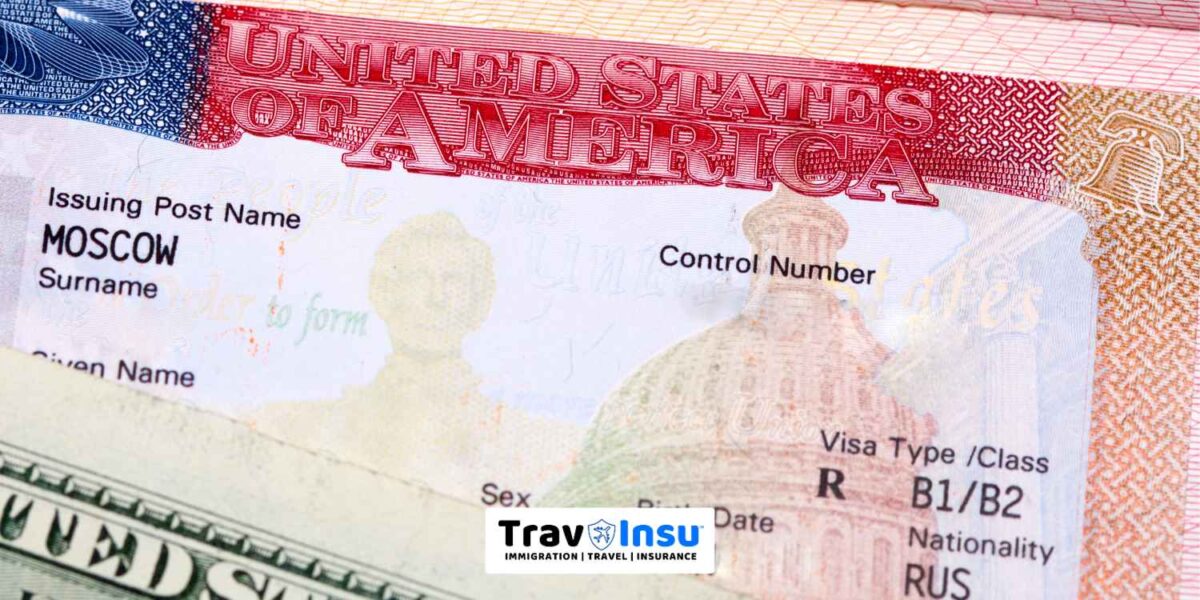
Nonimmigrant classification refers to the temporary admission of foreign nationals to the United States, for purposes such as tourism, medical treatment, business, temporary work, study, or other similar reasons
Here is a list of US visa types and their details, Decide and apply as per the purpose of your visit to the US and eligibility:
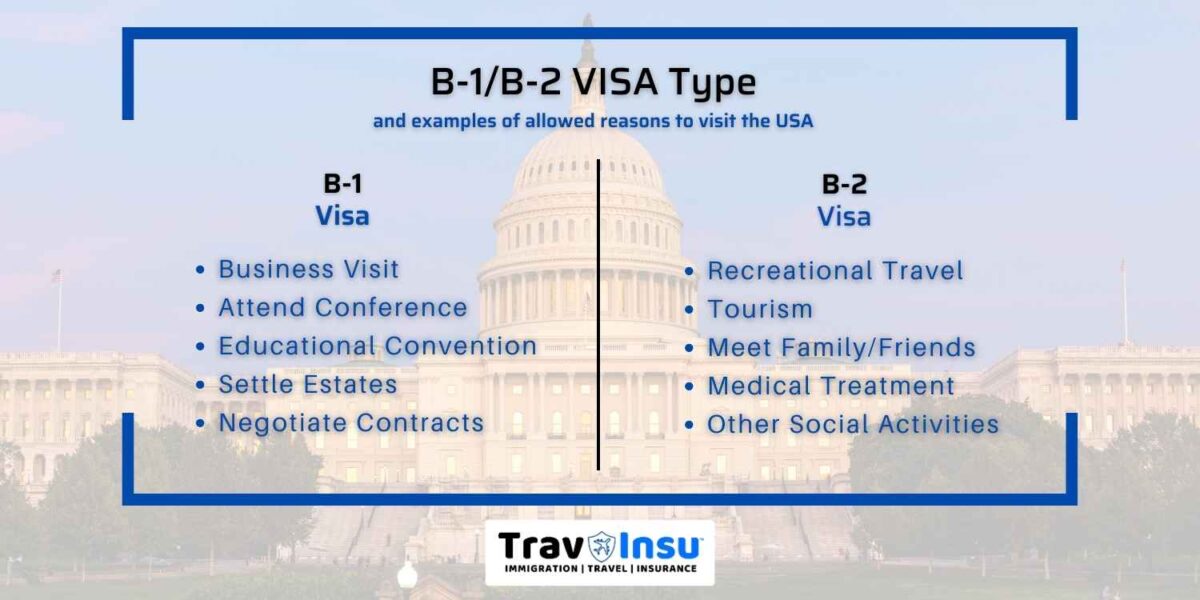
The B-1 Visa is for business purposes, such as:
- Attending conferences, Conventions (In their field)
- Negotiating Contracts.
- Settle Estates
- Consult with Associates
The B-2 Visa is for purposes, such as:
- Tourism and Vacation
- Visiting friends or Relatives
- Medical treatment
- For participating in Sports, Music, and Social events (provided no payments are received)
- Enrollment in short non-credit bearing courses, Not for official degrees
F-1 Student Visa:
This F-1 visa is for individuals who wish to pursue academic studies in the United States at an accredited institution.
H-1B Visa:
The H-1B visa is for foreign workers in specialty occupations that require specialized knowledge, typically in fields such as IT, engineering, or finance.
J-1 Exchange Visitor Visa:
The J-1 visa is for individuals participating in approved exchange programs, such as scholars, researchers, professors, or students in cultural exchange programs.
L-1 Visa:
The L-1 visa is for intracompany transferees who work for a company with offices both in the United States and abroad, and who are being transferred to a U.S. branch or affiliate.
O-1 Visa:
The O-1 visa is for individuals with extraordinary ability in the fields of science, arts, education, business, or athletics, who have been recognized nationally or internationally for their achievements.
TN Visa:
The TN visa is for Canadian and Mexican citizens who work in certain professional occupations under the North American Free Trade Agreement (NAFTA).
E-1/E-2 Visa:
The E-1/E-2 visas are for individuals from countries with which the United States has a treaty of commerce and navigation. The E-1 visa is for traders, while the E-2 visa is for investors.
K-1 Visa:
The K-1 visa is for the fiancé(e)s of U.S. citizens who are coming to the United States to get married and apply for permanent residency.
A Visa:
The A visa is for diplomats and Foreign Government Officials traveling to the United States on official duties or representing their government.
The head of State or Government such as The President or the Prime Minister is the only person who can enter the US for any purpose. Example A-2 -NATO1-6 Visa for foreign military personnel about to serve or be stationed in the US.
BCC Visa:
A Border Crossing Card (BCC visa) is a laminated card that allows Mexican Citizens to enter the US. This card is only for Mexican citizens.
These are just a few examples of the nonimmigrant visas available in the United States. Each visa category has its own eligibility requirements and application process.
C Visa:
C visa is known as the Transit Visa
A transit visa is a permit that allows individuals to enter the United States and stay for a layover while traveling in immediate and continuous transit through the United States en route to another country
The United States offers different types of transit visas, including the C-1, C-2, and C-3 visas
D Visa:
The D visa is also known as the crew member visa. The D visa allows crew members of airlines or employees on ships to enter the U.S. on a temporary basis.
It’s important to consult the official website of the U.S. Department of State or speak with an immigration attorney for specific and up-to-date information regarding the visa you are interested in. The Visa interviews involve questions being asked at the consulate and it helps to prepare for your interview questions before your scheduled appointment date.
Immigrant visa classifications
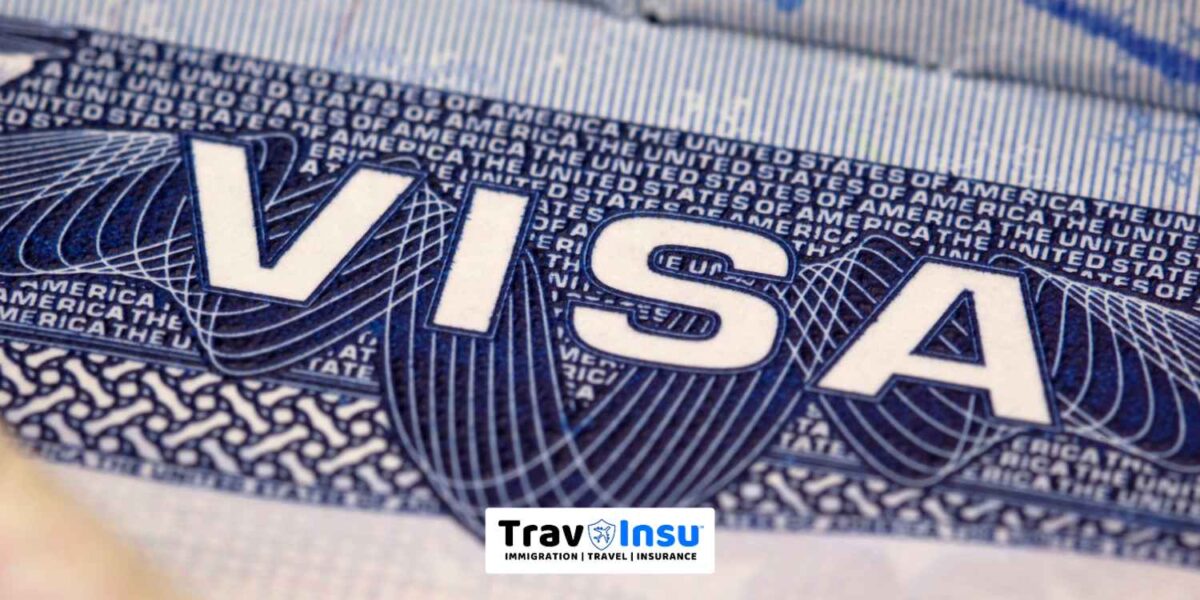
Immigrant visas are granted to foreign nationals who intend to live and work permanently and take up indefinite or permanent residence in the United States. U.S. Provides visas for immigration based on family ties, employment, adoption, special immigrant category, and diversity visa.
In most cases, a relative or employer sponsors the individual by filing an application with USCIS (U.S. Citizen and Immigration Services)
There are several immigrant visa classifications available, each with its own eligibility criteria and application process. Here are some common immigrant visa classifications:
- Immediate Relative (IR) Visas: These visas are for the close family members of U.S. citizens, including spouses, unmarried children under 21 years old, and parents of U.S. citizens who are 21 years or older. There are no numerical limitations on the number of visas issued in this category.
- Family Preference Visas: These visas are for certain relatives of U.S. citizens and lawful permanent residents. There are four preference categories:
- F1 Visa: Unmarried adult children of U.S. citizens
- F2 Visa: Spouses, minor children, and unmarried adult children of lawful permanent residents.
- F3 Visa: Married children of U.S. citizens.
- F4 Visa: Siblings of U.S. citizens.
- Employment-Based Visas: These visas are for individuals who have a job offer from a U.S. employer. There are several employment-based preference categories, including:
- EB-1 Visa: Priority workers, including individuals with extraordinary ability, outstanding professors and researchers, and multinational managers or executives.
- EB-2 Visa: Professionals with advanced degrees or exceptional ability in the sciences, arts, or business.
- EB-3 Visa: Skilled workers, professionals, and other workers in positions that require at least two years of training or experience.
- EB-4 Visa: Special immigrants, including religious workers, certain broadcasters, and employees of international organizations.
- EB-5 Visa: Immigrant investors who make a substantial investment in a U.S. commercial enterprise and create jobs.
- Diversity Visa (DV) Program: The Diversity Visa Program, also known as the Green Card Lottery, is a lottery-based program that provides immigrant visas to individuals from countries with low rates of immigration to the United States. The program aims to promote diversity among immigrants to the U.S.
- Special Immigrant Visas: These visas are for certain special categories, such as Afghan and Iraqi translators or interpreters who worked for the U.S. government, employees of U.S. foreign service posts, and religious workers.
It’s important to note that the application process and eligibility requirements vary for each immigrant visa classification. Additionally, there are annual numerical limits for some visa categories, which can result in waiting periods before a visa is available.
The Visa Waiver Program
The Visa Waiver Program (VWP) is a program implemented by the United States government that allows citizens or nationals of certain participating countries (Around 40) to enter the United States(for stays up to 90 days) for tourism or business purposes without obtaining a visa beforehand.
Instead of a visa, eligible travelers must apply for and obtain authorization through the Electronic System for Travel Authorization (ESTA) before their trip.
In return, those participating 40 countries must permit American citizens or nationals to travel for business or tourism to their countries for a similar duration of time without a visa.
The program is administered by the DHA (Department of Homeland Security) in consultation with the State Department.
Here are some key points about the Visa Waiver Program:
- Eligibility: Currently, citizens of 39 countries are eligible to participate in the Visa Waiver Program, including countries such as the United Kingdom, Germany, Japan, South Korea, France, and many others. The eligibility list is subject to change, so it’s essential to check the official U.S. government websites for the most up-to-date information.
- ESTA Application: Travelers from VWP countries must apply for authorization through the ESTA system before their trip. The application collects biographical information, passport details, and other relevant information. It is generally recommended to apply for ESTA at least 72 hours before travel, although it is possible to apply at the last minute in most cases. There is a fee associated with the ESTA application.
- Duration of Stay: Under the Visa Waiver Program, travelers can stay in the United States for up to 90 days for tourism or business purposes. This period cannot be extended, and travelers must depart the country before the 90-day limit expires.
- Purpose of Visit: The Visa Waiver Program is intended for temporary visits for tourism, business, or medical treatment purposes. It does not permit employment or study in the United States. If you plan to work or study in the U.S., you will need to obtain the appropriate visa.
- Entry Requirements: While the VWP allows for visa-free travel, travelers must still meet certain entry requirements upon arrival in the United States. This includes having a valid passport from a participating country, a round-trip ticket, and proof of sufficient funds to cover the expenses during the stay. Additionally, travelers may be subject to security checks and must satisfy the U.S. Customs and Border Protection (CBP) officer of their intent to return to their home country.
It’s important to note that the information provided here is a general overview, and specific requirements and regulations can change over time. It’s always advisable to consult official U.S. government sources, such as the U.S. Department of State or the U.S. Customs and Border Protection, for the most accurate and up-to-date information regarding the Visa Waiver Program.
Applying for a Nonimmigrant Visa, the Visa Process

The U.S. government offers a wide range of nonimmigrant visa categories to accommodate various purposes and qualifications. Nonimmigrant visas are issued by U.S. embassies and consulates abroad.
Each visa category has specific requirements, application procedures, and limitations. It’s crucial to understand the purpose and eligibility criteria of the visa you intend to apply for.
The application process usually involves
- Completing and submitting the DS 160 form Online
- Providing supporting documents
- Attending an interview at the consulate or embassy
- Paying the necessary fees.
- Waiting for the process to get completed.
It’s important to apply well in advance of your planned travel date, as visa processing times can vary.
Completing and submitting the DS 160 form Online
The DS 160 is the online Non-Immigration visa application and must be submitted to the Department of States before applying for any Non-immigration visas application
Prepare the documents needed for the Visa application
When applying for a nonimmigrant visa, it’s essential to prepare and gather the necessary documents to support your application. While the exact requirements may vary depending on the visa category and your individual circumstances, here are some common documents you may need to include:
- Passport: Ensure that your passport is valid for at least six months beyond your intended period of stay in the United States.
- Nonimmigrant Visa Application Form: Complete the online Non-immigrant Visa Application Form (DS-160) and print the confirmation page. Each applicant, including children, must have their own DS-160 form.
- Visa Application Fee Payment Receipt: Keep a copy of the receipt showing payment of the application fee.
- Photo: Provide a recent, passport-sized photograph that meets the U.S. visa photo requirements.
- Appointment Confirmation: Print and carry the confirmation page of your visa interview appointment.
- Supportive Documentation: The specific documents required will vary depending on the visa category. Here are some examples:
- Letter of Invitation: If you are visiting friends or relatives, a letter of invitation from your host in the United States may be required. The letter should include their contact information, your relationship with them, the purpose of the visit, and the duration of your stay.
- Financial Documents: Prepare documents to demonstrate your financial ability to cover your expenses during your stay. This may include bank statements, income tax returns, employment letters, or other evidence of financial support.
- Educational Documents: If you are applying for a student visa, you will need to provide proof of acceptance from the U.S. educational institution, such as an I-20 form. Academic transcripts and standardized test scores may also be required.
- Employment Documents: If you are applying for a work-related visa, you will typically need a letter from your employer detailing your position, job responsibilities, and purpose of travel.
- Travel Itinerary: Provide a detailed itinerary of your travel plans, including flight reservations, hotel bookings, and any planned activities or events.
- Other Supporting Documents: Depending on the visa category, you may need additional documents such as medical reports, criminal records, or proof of ties to your home country.
Remember to carefully review the specific requirements for your visa category and consult the official website of the U.S. embassy or consulate where you will apply for the most accurate and up-to-date information. It’s crucial to provide genuine and accurate documents to support your application.
Pay the Application Fee
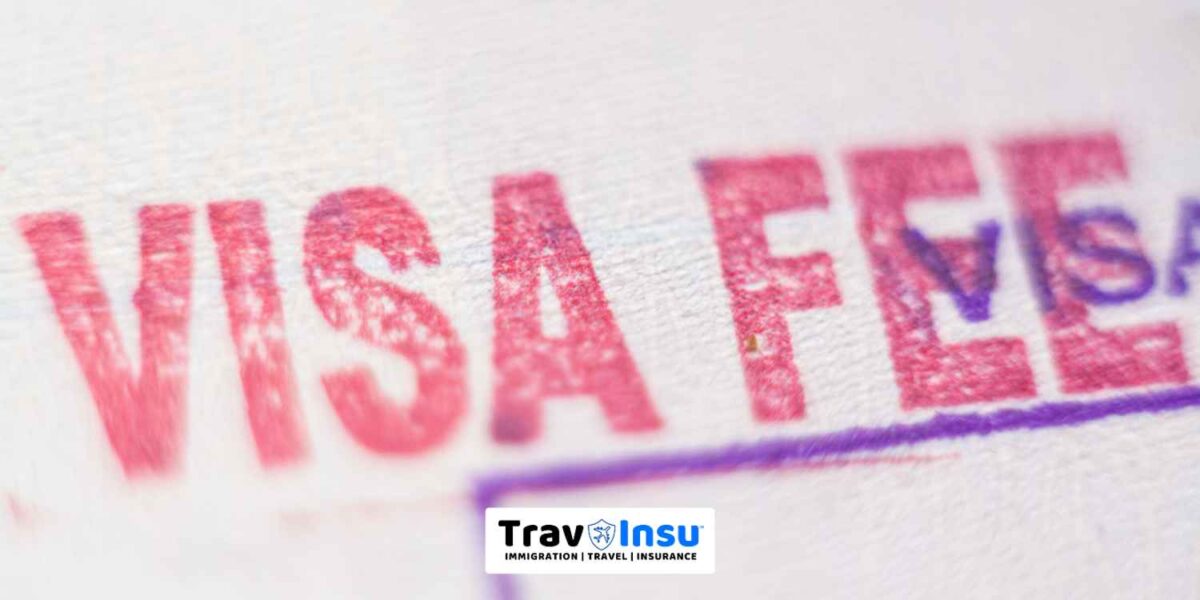
To pay the fee for the visa, you will need to follow the payment instructions provided by the U.S. embassy or consulate where you will be applying. Here are the general steps to pay the fee:
- Visit the U.S. Department of State’s website: Go to the website for the Consular Electronic Application Center (CEAC)
- Select the location and visa type: Choose the country where you will be applying for the visa and select the appropriate visa type.
- Pay the fee: You will be prompted to pay the visa application fee online using a valid credit or debit card. The fee amount will depend on the specific visa category you are applying for.
- Print the payment confirmation: After the payment is processed successfully, make sure to print the payment confirmation page for your records. This will serve as proof of payment and may be required during your interview for the visa.
It’s important to note that visa application fees are non-refundable, even if your visa application is denied. Additionally, the payment process may vary slightly depending on the country and specific instructions provided by the U.S. embassy or consulate.
The Visa Interview
The interview is an essential part of the nonimmigrant visa application process. Once you have submitted your application and supporting documents, you may be required to attend an interview at a U.S. embassy or consulate. The purpose of the interview is for the consular officer to assess your eligibility for the visa and verify the information provided in your application.
Here are some key points to keep in mind:
- Schedule an Appointment: You will need to schedule an interview appointment after submitting your application. The appointment can be made through the U.S. embassy or consulate’s website or via the visa application center.
- Preparation: It’s crucial to prepare for the interview by reviewing the requirements of your specific visa category and having all the necessary documents ready. This includes your passport, application confirmation page, supporting documents, and any additional evidence to support your case.
- Interview Questions: During the interview, the consular officer may ask you questions about your purpose of travel, intended activities in the United States, ties to your home country, and other relevant details. Be prepared to provide clear and concise answers. Every Consular Officer under Section 214 (b) of the Nationality Act assumes that every applicant intends to migrate to the U.S. The applicant must therefore convey clearly to the officer his intent for applying for a nonimmigrant visa
- Supporting Documents: Bring all the required supporting documents to the interview. This may include financial documents, invitation letters, educational transcripts, and employment letters, depending on the visa category. It’s important to organize your documents in a clear and easily accessible manner.
- Honesty and Accuracy: Answer all questions honestly and accurately. Providing false information or misleading the consular officer can have serious consequences, including visa denial or even future visa ineligibility.
- Language and Translation: The interview is typically conducted in English. If you are not fluent in English, you may bring an interpreter with you. However, it’s important to note that interpreters must be proficient in both English and your native language, and they should not be family members or close associates.
- Confidence and Professionalism: Maintain a confident and professional demeanor during the interview. Dress appropriately and be respectful towards the consular officer.
- Additional Screening: In some cases, additional security clearances or administrative processing may be required. This can prolong the visa processing time, and you may be asked to submit additional documents or undergo additional interviews.
Remember to check the specific instructions provided by the U.S. embassy or consulate where you will have the interview, as procedures may vary slightly. It’s also advisable to arrive early for your interview and be prepared for possible wait times.
Do I need to submit the Visa Application Form DS-160 online?

Yes, for most nonimmigrant visa categories, including temporary visas, you are required to submit the visa application form DS-160 online. The DS-160 is an electronic form used by the U.S. Department of State to collect biographical information, travel plans, and other relevant details from visa applicants.
Here are the general steps to complete and submit the DS-160 form online:
- Access the Form: Visit the U.S. Department of State’s Consular Electronic Application Center (CEAC) website at ceac.state.gov and select the option to start a new DS-160 application.
- Complete the Form: Fill out all the required fields in the DS-160 form. This includes providing accurate personal information, passport details, a travel plan, and answering security-related questions.
- Upload a Photo: Upload a recent, passport-sized photo that meets the specified requirements outlined in the DS-160 instructions.
- Review and Submit: Carefully review all the information you have entered to ensure its accuracy. Once you are satisfied, click the “Sign and Submit” button to submit the form electronically.
- Print Confirmation Page: After submitting the DS-160 form, a confirmation page with a barcode will be generated. Print this page as you will need it for the visa interview and for your records.
It’s important to note that you may be required to bring additional supporting documents and forms to the visa interview, as specified by the U.S. embassy or consulate where you will apply.
It’s advisable to complete the DS-160 form accurately and thoroughly, as any errors or inconsistencies could affect the processing of your visa application. It’s also recommended to keep a copy of the confirmation page and supporting documents for your reference.
Extending a US Temporary Visa
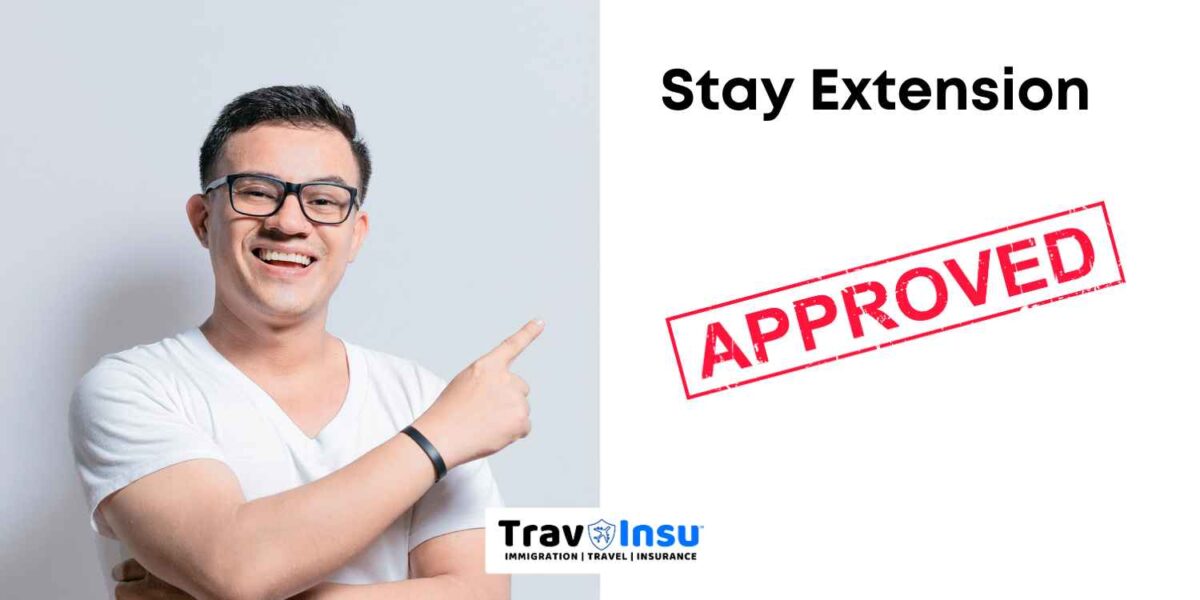
Extending a temporary visa in the United States is possible in certain circumstances. If you are currently in the U.S. on a nonimmigrant visa and wish to extend your stay, here are some key points to consider:
- Eligibility: You must meet the eligibility requirements for the specific visa category you are seeking an extension for. Each visa category has its own rules and limitations, so it’s important to review the requirements and determine if you qualify.
- Timely Application: It’s crucial to apply for an extension before your current visa expires. Failing to do so may result in being out of status or accruing unlawful presence in the country.
- Form I-539: To request an extension, you will typically need to file Form I-539, Application to Extend/Change Nonimmigrant Status, with the U.S. Citizenship and Immigration Services (USCIS). This form must be submitted along with the required supporting documents and filing fee.
- Supporting Documents: Depending on the visa category, you may need to provide supporting documentation such as a valid passport, evidence of continued financial support, a detailed explanation for the extension request, and any other relevant documents specified by the USCIS.
- Reason for Extension: It’s important to provide a compelling reason for your visa extension. This could include continuing academic studies, ongoing employment, medical treatment, or other valid justifications. The USCIS will evaluate your request based on the merits of your situation.
- Processing Time and Decision: The processing time for extension requests can vary. It’s advisable to submit your application well in advance of your current visa’s expiration date. The USCIS will notify you of their decision regarding the extension request.
It’s important to note that an extension is not guaranteed, and it’s advisable to consult with an immigration attorney or seek legal advice to understand your specific circumstances and options for extending your temporary visa in the United States.
Do all applicants for nonimmigrant visas necessarily have to go to the embassy or consulate for an interview?
No, not all applicants for nonimmigrant visas are required to attend an interview at the U.S. embassy or consulate. The interview requirement depends on various factors, including the applicant’s age, visa category, and previous visa history.
Here are some scenarios where an interview may not be required:
- Visa Waiver Program (VWP): Citizens of certain countries participating in the Visa Waiver Program may be eligible to travel to the United States for tourism or business purposes without a visa. However, they still need to apply for authorization through the Electronic System for Travel Authorization (ESTA) and undergo a screening process.
- Renewal of Certain Visa Categories: In some cases, applicants seeking to renew their visa in the same visa category may be eligible for a waiver of the interview requirement. This is typically applicable to certain B1/B2 visitor visas or certain types of work visas.
- Age Exemptions: Children under the age of 14 and applicants aged 80 and above may be exempt from the interview requirement. However, they are still required to submit the visa application and supporting documents.
- Diplomatic or Official Visa Applications: Applicants traveling to the United States on diplomatic or official purposes may not be required to attend an interview.
It’s important to note that even if an interview is not required, consular officers have the discretion to request an interview for any applicant if they deem it necessary. Additionally, circumstances can vary, and the interview requirements may change based on the specific policies and practices of the U.S. embassy or consulate where you are applying.
Does the expiration date of a visa indicate how long I may stay in the United States?
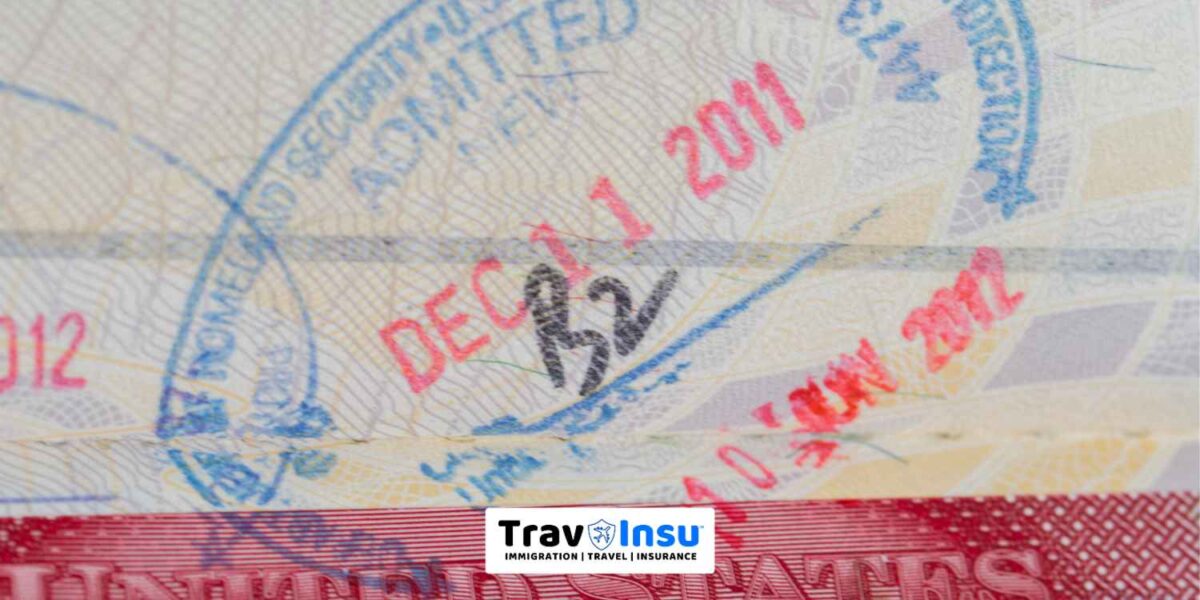
No, the expiration date on your visa does not determine how long you may stay in the United States. The expiration date on your visa simply indicates the last day on which you can use that visa to enter the United States.
The duration of your stay in the U.S. is determined by the “admission period” granted by the U.S. Customs and Border Protection (CBP) officer at the port of entry. The CBP officer will inspect your documents, including your passport, visa, and supporting documents, and make a determination on how long you can stay in the U.S. based on the purpose of your visit and the specific visa category you hold.
The CBP officer will typically place an entry stamp in your passport with an annotation indicating the date until which you are authorized to stay in the U.S. This period is often referred to as your “admission period” or “duration of status.”
It’s important to note that your admission period may be shorter than the expiration date on your visa. For example, if you have a multiple-entry visa, you may be admitted for a shorter period each time you enter the U.S.
To ensure compliance with U.S. immigration laws, it is essential to depart the United States before the expiration of your authorized stay as determined by the CBP officer. If you need to stay longer or wish to extend your stay in the U.S., you may need to apply for an extension or change of status with the U.S. Citizenship and Immigration Services (USCIS) before your authorized stay expires.
It’s advisable to consult the official information provided by the U.S. embassy or consulate and familiarize yourself with the terms and conditions of your specific visa category to understand the duration of your authorized stay in the United States.
Overstaying less than 180 days
It is important to note that overstaying a visa can have serious consequences, including being barred from reentering the United States, being deported, and being ineligible for future visas.
If the individual entered the United States on a visa, the visa will automatically be invalid, and they will be required to get a new one for future travel.
If an individual overstays their visa in the United States for less than 180 days, they will not be challenged with a reentry ban
However, if they overstay for more than 180 days, they may be barred from reentering the United States for three years
What is a three-year travel bar?
The three-year travel bar is a provision of U.S. immigration law that prohibits individuals from returning to the United States if they depart after having previously been in the country illegally for more than 180 days but less than one year
The exact time bar depends on the length of the individual’s unlawful stay in the United States
The three-year bar is a ground of inadmissibility, which means that the individual will be found inadmissible and thus denied a green card or a nonimmigrant visa
However, a waiver of the three-year bar is available if the visa applicant is the spouse or child of a U.S. citizen or the spouse or child of a lawful permanent resident and can prove that the bar would result in “extreme hardship” to the applicant’s family
It is important to follow the U.S. immigration laws and regulations to avoid being barred from reentry to the United States
Waiver of the Three- and Ten-Year Time Bars
If you overstay your visa but are able to provide convincing proof to show that your spouse or parents—who are either citizens of the United States or lawful permanent residents—would suffer significant hardship if you did not receive the sought immigration benefit, a time bar waiver may be granted to you.
How much time should there be remaining before my passport expires when I apply for a visa?

When applying for a visa, it is generally recommended that your passport be valid for at least six months beyond your intended period of stay in the United States. This requirement is often enforced by U.S. immigration authorities to ensure that your passport remains valid throughout your visit and to allow for any unforeseen delays or extensions during your stay.
While the specific validity requirements can vary depending on the visa category and your country of citizenship, having a passport with at least six months of remaining validity beyond your planned departure date is a good rule of thumb to follow.
If your passport is set to expire within six months or less, it’s advisable to renew your passport before applying for a U.S. visa to avoid potential complications or visa processing delays.
My non-immigrant visa will expire soon, do I need to complete all of the visa application procedures again to renew it?
When renewing a nonimmigrant visa, you will generally need to go through a similar application process as you did when you first obtained the visa. While the specific requirements may vary depending on your visa category and individual circumstances, here are some key points to consider:
When renewing a nonimmigrant visa, the individual must complete the online application form (Form DS-160), schedule an interview appointment at the U.S. Embassy/Consulate, pay the visa application fee, and provide all the required documents
While renewing your visa remember to bring all your current and expired passports covering the entire period of your stay in the United States
The visa the individual is renewing must either still be valid or expired less than 48 months ago.
- Application Form: You will likely need to complete a new visa application form. In most cases, this will be the DS-160 form, which is completed online through the Consular Electronic Application Center (CEAC) website.
- Supporting Documents: Prepare the necessary supporting documents to accompany your visa application. These may include a valid passport, a current photograph, the confirmation page of your DS-160 form, proof of financial resources, and any additional documents specific to your visa category.
- Visa Interview: You will generally be required to attend a visa interview at the U.S. embassy or consulate. However, certain visa categories or age groups may be exempt from the interview requirement. Check the specific guidelines provided by the embassy or consulate where you will be applying.
- Biometric Information: Depending on the embassy or consulate’s procedures, you may need to provide biometric information such as fingerprints and a photograph during the application process.
- Visa Fees: Pay the visa application fee, which is typically required for visa renewal. The fee amount may vary depending on your visa category, so check the embassy or consulate’s website for the current fee information.
Frequently Asked Questions
What is the duration of stay for a nonimmigrant visa?
The duration of stay for a nonimmigrant visa can vary depending on the type of visa and the circumstances of the individual’s visit. For example, a visitor with a B-1 or B-2 visa can stay in the United States for a maximum of six months per entry.
However, those wishing to remain longer than six months will be required to apply for an extension of stay with the US Citizenship and Immigration Services
The duration of stay for other types of nonimmigrant visas can range from one month to several years, depending on the type of visa and the individual’s circumstances.
Is it a problem if my visa expires while I am in the United States?
Basically, the expiration date of a visa is the last day an individual may use the visa to enter the U.S. It does not indicate how long the individual may stay in the U.S.
The authorized stay in the United States is generally until the date on the Form I-94, given to the individual by a U.S. immigration officer when they entered the country.
If your visa expires while in the U.S. you should not have a problem as long as you comply with the Department of Homeland Security decision on the conditions of your stay.
Do I need to submit customs declaration forms for all members of the family when traveling with my family?
If an individual is traveling with their family, they do not need to submit customs declaration forms for each member of the family. Instead, they can complete one form per family unit
I am a student going to the United States for studies, can my brother accompany me to the U.S. on a student visa?
Your Brother or any other family member must apply for a B-1/B-2 (Business & Tourism) visa and cannot live in the U.S. for the entire term of your F1 student visa. Only children aged under 21 years and spouses qualify to accompany students.
I am a foreign national living in the U.K. Can I apply for a nonimmigrant visa in the U.K.?
Foreign nationals living in the U.K. can apply for a nonimmigrant visa to enter the United States. When applying for a nonimmigrant visa, it is recommended to apply at the consulate or embassy nearest to the individual’s home address
How to check the type of visa I hold?
Immigrant and nonimmigrant visa classifications are usually available on the USCIS website. To check the type of visa you hold or obtain information about your visa status, you should refer to your visa documentation, such as your visa stamp in your passport or any approval notices or documents provided to you by the U.S. Department of State or U.S. Citizenship and Immigration Services (USCIS). These documents will specify the visa category and the terms and conditions of your visa.
Alternatively, you can contact the U.S. embassy or consulate where you obtained your visa or the USCIS for more information regarding your visa status. They will be able to provide you with the most accurate and up-to-date information about your specific visa situation.
Conclusion
It’s worth noting that immigration laws and visa policies can change over time, so it’s crucial to consult the official resources of the U.S. Department of State and U.S. Citizenship and Immigration Services (USCIS) for complete information. You can also seek advice from an immigration attorney to obtain the most recent and detailed information.
More specific information on US visas is available on the U.S. Department of State website.
